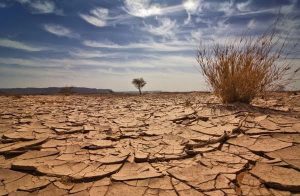The Kashimbila dam project in Taraba state will generate up to 40 megawatts (MW) of electricity, provide water sources for farmers and fishermen, as well as protect Nigerian communities around its route from a possible flooding that could happen any time, the minister of power, works and housing, Mr. Babatunde Fashola has said.
As gathered by OGN, Fashola was at the multipurpose dam recently to inspect works on it, and said that it was initiated in 2007 to first protect states in the country’s northeast from been submerged by the possible leak of water from Cameroon’s Lake Nyos.
Reports by environmental scientists on the lake indicate that up to 50 million cubic metres (1.8 billion cubic feets) of water could be released from the structurally weak volcanic Lake Nyos between 10 and 20 years.
Fashola disclosed that states that include Taraba, Benue, Cross River, Delta and Kogi that are on the route of the tributaries of the Katsina-Ala River could be affected by the imminent flood, hence the need to expedite works on the dam.
He noted that in addition to the environmental protection, the dam will provide electricity and support agricultural ventures in the surrounding communities.
“Nigeria has decided since 2007 or thereabouts to intervene and prevent the disaster by building a dam and from the dam you have water which is a force of energy, we decided to build a 40MW plant to generate electricity to feed communities like Doga, Wukari, Takum, Kashimbila and many other communities in the Northeast and Yandev in Benue State who are not yet connected to the grid,” said Fashola.
According to reports, Cameroonian Isaac Njilah, a geologist at the University of Yaoundé in 2005, suggested that the natural dam of volcanic rock that holds the lake’s waters could collapse in the near future.
Njilah noted that erosion has worn the dam away, causing holes and pockets to develop in the dam’s upper layer, and water already passes through the lower section while landslides have reduced its strength on the outside.
He disclosed that seismic activity caused by the lake’s volcanic foundation could therefore cause its wall to give way and its water flooding downhill into Nigerian states and areas home to more than 10,000 people
Also, a United Nations team led by Olaf van Duin and Nisa Nurmohamed of the Netherlands Ministry of Transport and Public Works inspected the dam over three days in September 2005 and confirmed that the natural lip had weakened.
Van Duin believed that the dam would breach within the next 10 to 20 years.





